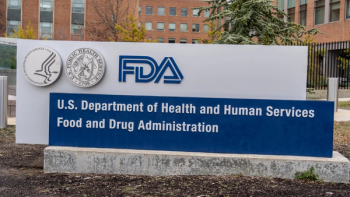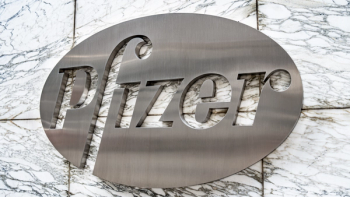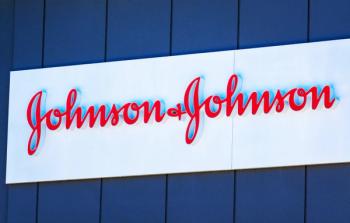
FDA Accepts GSKs NDA for First-in-Class IBAT Inhibitor Linerixibat to Treat Cholestatic Pruritus in Primary Biliary Cholangitis
New drug application submission was based on positive data from the Phase III GLISTEN trial, which demonstrated significant and sustained reductions in pruritus and related sleep disruption in patients treated with linerixibat.
The FDA has accepted GSK’s New Drug Application (NDA) for linerixibat, a potential first-in-class IBAT inhibitor, for the treatment of cholestatic pruritus in patients with primary biliary cholangitis (PBC). According to the company, the submission is supported by positive Phase III data from the GLISTEN trial, which demonstrated significant and sustained reductions in pruritus and related sleep disruption compared to placebo. Full results were first presented last month at the European Association for the Study of the Liver Conference.1
What do the GLISTEN Trial Results Mean for Patients with PBC?
“The FDA’s acceptance of this file is an important milestone in the development of linerixibat,” said Kaivan Khavandi, SVP, global head, respiratory, immunology, inflammation, GSK, in a press release. We believe that linerixibat has the potential to make a difference in the lives of patients living with relentless itch associated with PBC and its related sleep interference. These are debilitating symptoms which currently have very limited treatment options.”
Study Design and Geographic Scope
- The double-blind, randomized, placebo-controlled GLISTEN trial included 238 patients with PBC.
- Patients were randomly assigned in an equal ratio to receive either linerixibat or placebo during the initial 24-week treatment phase. From there, participants could potentially continue into part B of the study.
- The trial’s primary objective was to evaluate the efficacy and safety of linerixibat compared to placebo in treating cholestatic pruritus in patients with PBC.
- The trial was conducted across 19 countries, including sites in the Americas, Europe, China, and Japan.
Key Efficacy Outcomes: Pruritus and Sleep Interference
- Over a 24-week period, patients receiving linerixibat experienced a statistically significant reduction in worst itch scores compared to placebo, with a least squares (LS) mean difference of -0.72 (95% CI: -1.15, -0.28; p=0.001), measured using a 0–10 numerical rating scale.
- Notably, a rapid onset of benefit was observed as early as week two (LS mean difference: -0.71; p<0.001), and improvements were sustained through the end of the trial.
- Linerixibat also significantly reduced itch-related sleep interference, with an LS mean difference of -0.53 (p=0.024).
- Fifty-six percent of patients treated with linerixibat achieved a clinically meaningful ≥3-point reduction in itch severity at week 24, compared to 43% in the placebo group.
Safety and Tolerability Profile
- The most common adverse event reported with linerixibat was diarrhea, which was typically mild.
- Four percent of patients in the treatment arm discontinued therapy due to diarrhea, compared to 1% in the placebo group.
- The safety profile of linerixibat was consistent with findings from earlier studies and aligned with the known mechanism of IBAT inhibition.2
Competitive Landscape: Other Advancements in PBC
The NDA acceptance comes at a time when other PBC studies are also showing promise.
Last month , Gilead announced that Livdelzi (seladelpar) demonstrated sustained efficacy and a favorable safety profile in patients with PBC, regardless of prior treatment with fibrates or obeticholic acid.- Notably, the therapy also showed clinically meaningful improvements in patients with pruritus, a symptom experienced by approximately 80% of individuals living with PBC.
Understanding the PBC Patient Population
- Currently, an estimated 130,000 people are living with PBC in the United States. The condition is considerably more common in women, with a 9:1 female-to-male ratio.
- Globally, prevalence ranges from 1.91 to 40.2 per 100,000 people, with disease onset most commonly occurring between the ages of 40 and 60.3
“Relentless itch is present in the majority of patients with PBC and is a symptom that affects sleep, mental health, and quality of life,” said Khavandi, in a May press release. “With linerixibat, we are one step closer to addressing the high unmet need of itch and its related sleep interference that are critically important to patients but historically under-treated.”2
References
1. Linerixibat New Drug Application (NDA) accepted for review by the US FDA for cholestatic pruritus in patients with primary biliary cholangitis (PBC). GSK. June 2, 2025. Accessed June 4, 2025. https://www.gsk.com/en-gb/media/press-releases/linerixibat-new-drug-application-nda-accepted-for-review-by-the-us-fda/
2. GLISTEN phase III trial results show linerixibat significantly improves cholestatic pruritus (relentless itch) in primary biliary cholangitis (PBC). GSK. May 8, 2025. Accessed June 4, 2025. https://www.gsk.com/en-gb/media/press-releases/glisten-phase-iii-trial-results-show-linerixibat-significantly-improves-cholestatic-pruritus/
3. Gilead’s Livdelzi Shows Lasting Efficacy in Primary Biliary Cholangitis, Regardless of Prior Therapy. PharmExec. May 9, 2025. Accessed June 4, 2025. https://www.pharmexec.com/view/gilead-livdelzi-lasting-efficacy-primary-biliary-cholangitis-prior-therapy
Newsletter
Lead with insight with the Pharmaceutical Executive newsletter, featuring strategic analysis, leadership trends, and market intelligence for biopharma decision-makers.




